A dream getaway to the Maldives doesn’t have to come with a luxury price tag. While most people picture high end resorts and overwater villas when imagining a Maldives escape, there’s a more affordable and equally unforgettable way to experience this island paradise. On our own budget adventure through the Maldives, we chose to explore the country’s stunning local islands. These lesser-known gems offer charming guesthouses and cozy inns that deliver warm hospitality, exciting excursions, and authentic Maldivian cuisine. You won’t get five-star luxury, but you will get real connections, vibrant culture, and some of the most breathtaking natural beauty you’ll ever witness.
Best of all, traveling this way costs just a fraction of what you’d spend at a luxury resort. Whether you’re snorkeling with manta rays, wandering sun kissed beaches, or enjoying fresh seafood with locals, a budget trip to the Maldives can be just as magical if not more. This is your complete guide to planning a budget-friendly trip to the Maldives, inspired by our own journey through its local islands.
- How to Enjoy a Week in the Maldives Without Overspending.
- How to Plan an Affordable Trip to the Maldives
- How to Travel Between Islands in the Maldives
- Best Budget Accommodations in the Maldives
- Discover Cheap and Comfortable Accommodation Options
- Explore Maldives Without Spending Too Much
- Maldives Travel Taxes Explained Clearly
- What to Pack for Maldives on Budget
- Maldives Travel Seasons and Best Time to Go
How to Plan an Affordable Trip to the Maldives
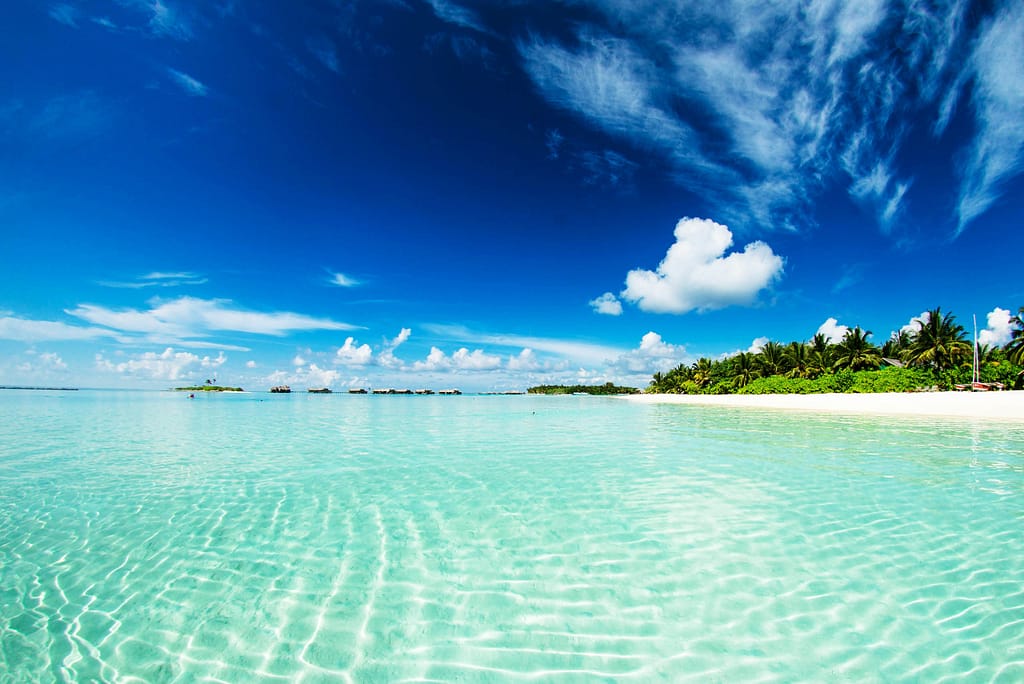
Planning a budget-friendly trip to the Maldives can be surprisingly overwhelming not because of the destination itself, but because trustworthy, detailed information is hard to come by. When we began mapping out our own affordable Maldives adventure, we were stunned at how little guidance there was on essentials like local transport, accommodations, or even basic excursions.
That’s exactly why we put together this in-depth guide, filled with everything we learned along the way. From travel hacks to hidden gems, it’s designed to help you plan a seamless, memorable trip to the Maldives — whether you’re exploring solo, with friends, or alongside your loved ones. Get ready to experience the magic of the Maldives without the luxury price tag.
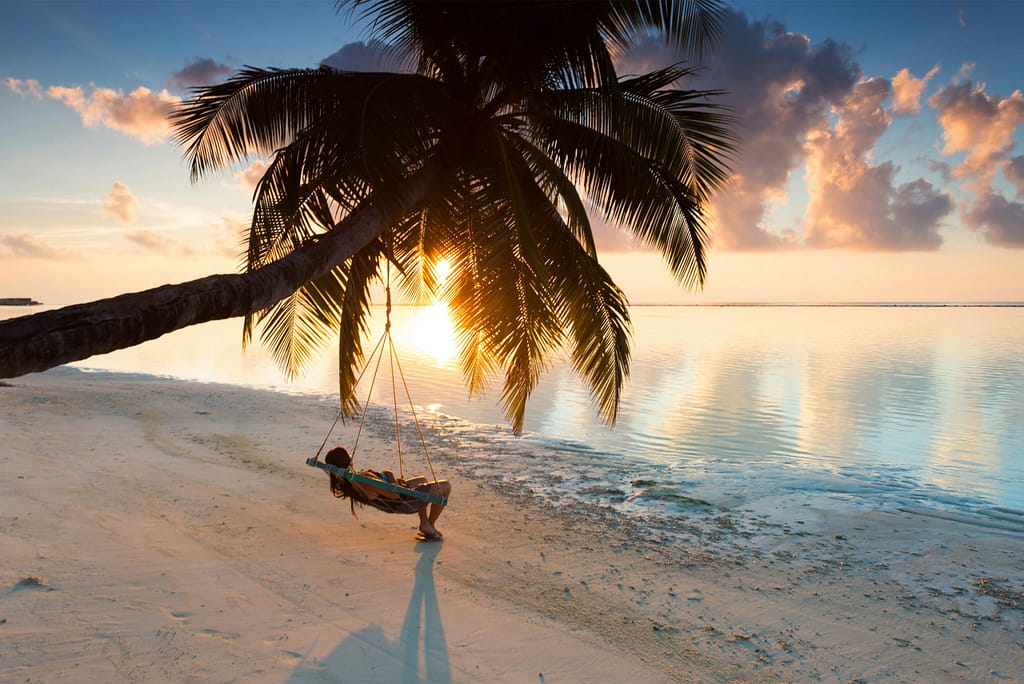
Traveling to the Maldives on a budget offers a very different experience compared to staying at a luxury resort and it’s important to know what kind of trip you’re truly looking for before you start planning.
A budget-friendly Maldives getaway typically means staying in simpler guesthouses, enjoying local meals, and immersing yourself in authentic island life. You may not have the plush amenities or overwater villas, but you’ll still be surrounded by the same stunning turquoise waters, white-sand beaches, and vibrant marine life that make the Maldives world-famous.
If your heart is set on high-end pampering, private pools, and fine dining, then a budget trip might not align with your expectations. But if you value raw natural beauty, cultural connection, and unforgettable experiences over luxury touches then the Maldives on a budget could be the perfect kind of paradise for you.
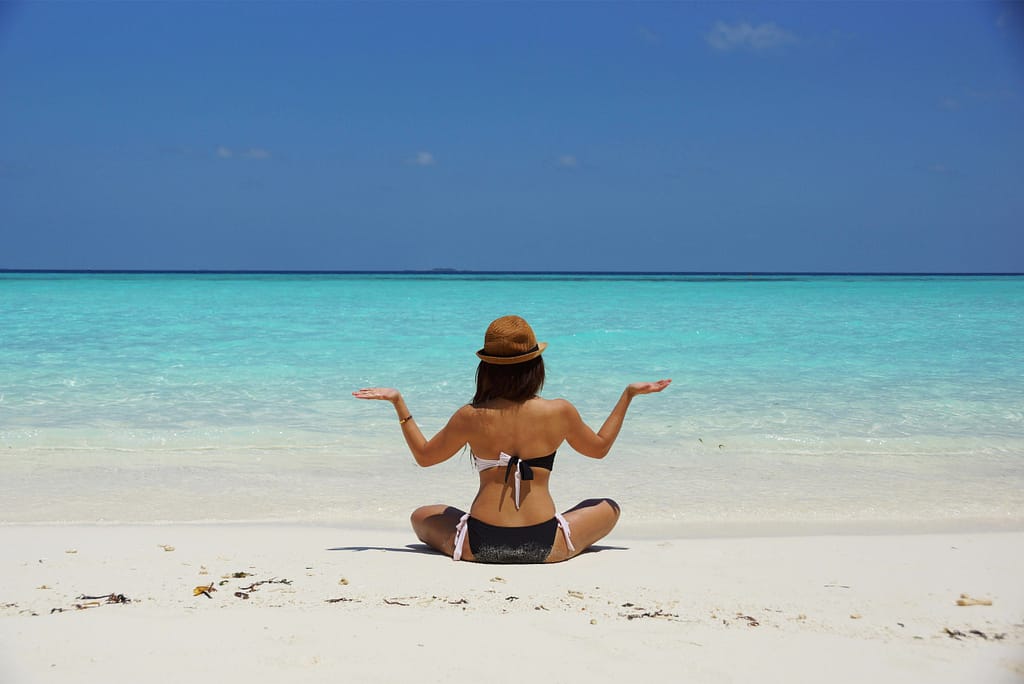
One important thing to be aware of when visiting the Maldives is that it is a Muslim country governed by Islamic law. Every citizen is Muslim, and the country operates under sharia principles. Upon arrival, visitors are required to sign a customs declaration confirming they are not bringing prohibited items such as religious texts (like bibles or idols used for worship), pork products, or alcohol into the country.
These religious and cultural values also influence daily life on the local islands. Modest dress is expected when you’re outside of tourist areas especially on inhabited islands. That means covering your shoulders and knees while walking around public spaces out of respect for the local community. The level of enforcement can vary depending on the island, but dressing modestly is always the safe and respectful choice.
Another key cultural difference is the Maldivian weekend, which falls on Friday and Saturday. Friday in particular is a day of rest and family for most locals, so many restaurants close, and public ferries typically don’t operate. This can significantly affect your travel plans especially if you’re relying on budget friendly transportation between islands.
Speaking of transport, navigating the Maldives on a budget requires careful planning. Public ferries are limited and not always convenient, especially around the weekend. Make sure to double check ferry schedules in advance and plan your inter-island transfers accordingly.
When it comes to money, most guesthouses and hotels will accept credit or debit cards, but not all do, and it’s essential to confirm this before you arrive. For small restaurants, local shops, and casual food spots, cash is often the only accepted payment method.
Although airport ATMs are available, they can be unreliable. In our case, one ATM withdrew money from our account but failed to dispense it. Because of that experience, we now recommend bringing a small amount of cash with you and exchanging it at an official currency exchange desk at the airport. You don’t need a large sum—just enough to cover meals and small expenses, especially if you’re planning to eat outside of your guesthouse.
It’s also worth noting that while many guesthouses accept card payments, they typically add a surcharge of around 3% to 4% for transactions. Additionally, some may require certain taxes and service charges to be paid in cash, so it’s best to clarify all payment details in advance.
How to Travel Between Islands in the Maldives
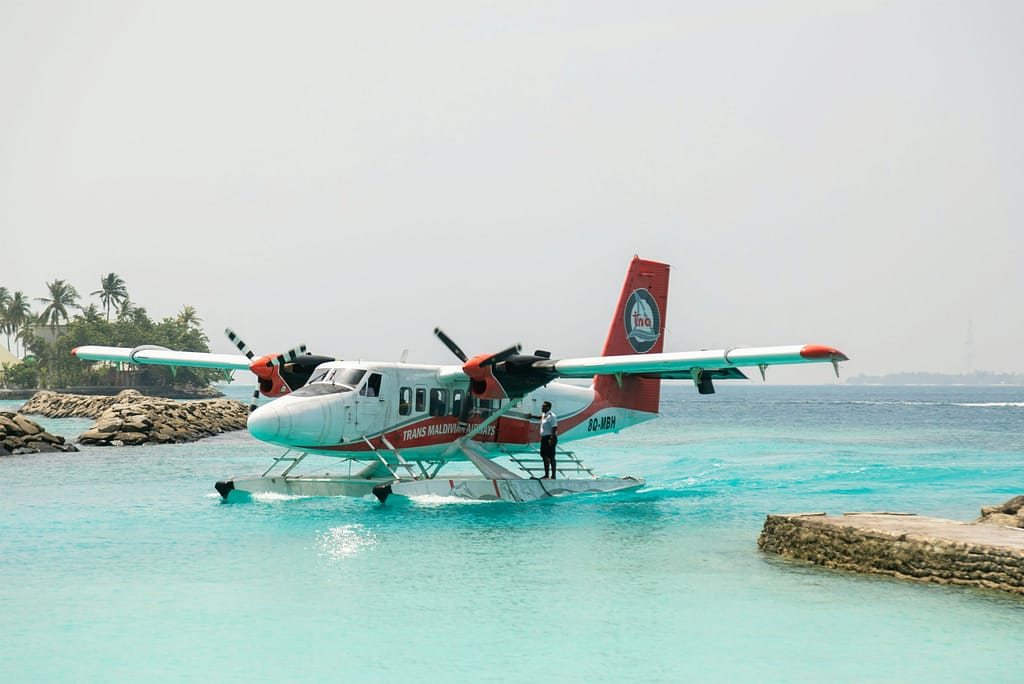
When exploring the Maldives on a budget, your transportation options generally fall into three main categories: local ferries, speedboats, and domestic flights. Each serves a different purpose depending on the distance, budget, and time you have available.
For short distances within a single atoll which is a group of islands local ferries are the most economical choice. These traditional wooden boats typically cost between $1 to $2 USD per ride, making them the go-to option for budget travelers. However, be prepared for slow travel, as these ferries are not built for speed. What’s more, their schedules can be unpredictable. During our travels, especially outside the busy Northern Malé Atoll (where the international airport is located), we encountered frequent delays and cancellations. If your trip relies heavily on local ferries, it’s a good idea to stay flexible with your itinerary.
For longer distances, particularly when traveling between different atolls, local speedboats offer a faster and more reliable option. While the price point is significantly higher typically around $40 USD or more depending on the distance they run on more consistent schedules and are still more affordable than private transfers or domestic flights. Speedboats are a popular mode of transport among locals, and you’ll likely be sharing your ride with Maldivian commuters rather than tourists.
To give you an example: traveling from the main airport near Malé to Dharavandhoo, the capital island of Baa Atoll, takes just about two hours by speedboat. That’s significantly quicker than a local ferry, and ideal if you want to maximize your time exploring rather than sitting in transit.
Lastly, if you’re heading to more remote islands or pressed for time, domestic flights are available to the capital island of each atoll. While they’re not the cheapest option, they offer convenience and speed that may justify the extra cost depending on your route.
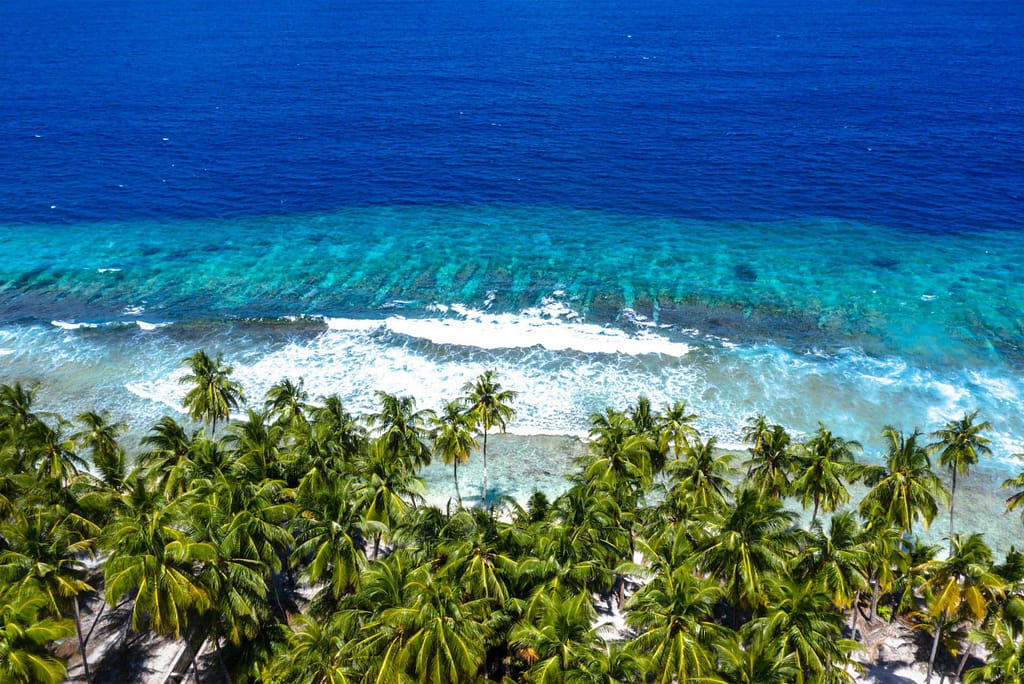
Navigating transport in the Maldives particularly by speedboat can be a bit unpredictable, as official schedules are often not publicly posted and are subject to change based on local conditions. For this reason, it’s wise to consult directly with your accommodation. Guesthouses and resorts typically have the most accurate, up-to-date information on transfers and can assist in coordinating your arrival and departure.
For those prone to seasickness or seeking a more reliable alternative, domestic flights between islands offer a convenient, albeit more expensive, solution. While they come at a higher cost, many travelers find the added comfort and reduced travel time well worth the investment. If you’re planning to visit a local island within an atoll, flying into the nearest domestic airport can significantly reduce overall travel time and cost even if a short ferry or speedboat ride is still required afterward.
Maldivian Airlines and Manta Air are the two primary regional carriers servicing these routes. Domestic flights are substantially more affordable than seaplane transfers, typically ranging from $150 to $550, depending on your specific destination. You can also confirm your local flights from here.
Best Budget Accommodations in the Maldives
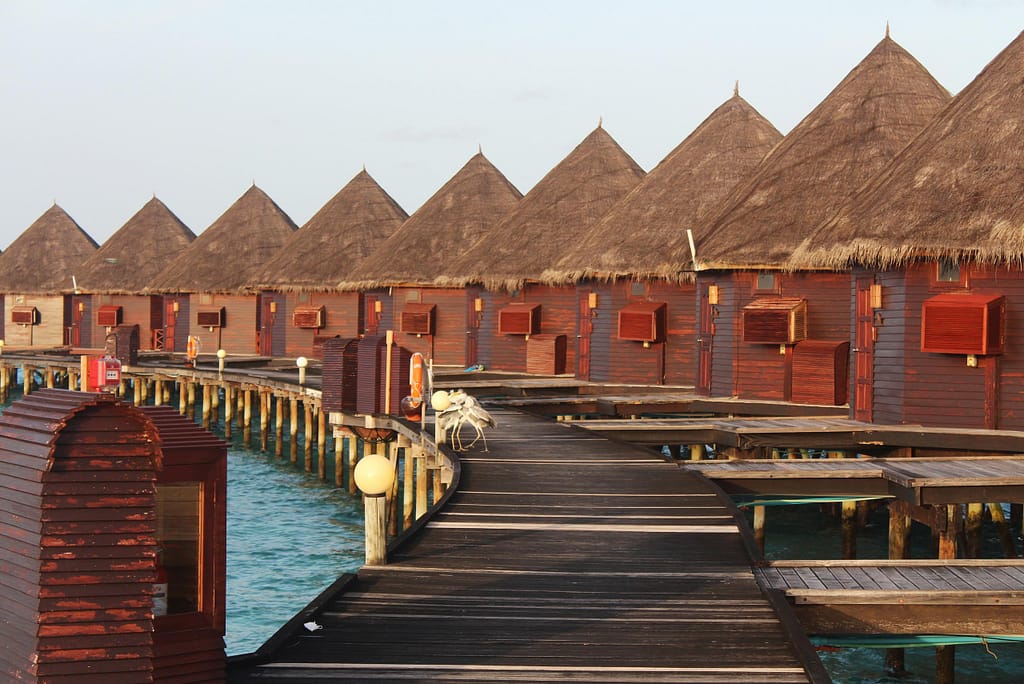
One of the biggest deterrents for travelers dreaming of a Maldives getaway? The steep price tags tied to luxury resorts, particularly the iconic overwater villas and beachfront bungalows. While these high-end accommodations can cost thousands of dollars per night, the good news is you don’t have to spend a fortune to enjoy the Maldives.
Local islands offer an affordable and authentic alternative. On these islands, you’ll find guesthouses and family-run inns that provide cozy, clean rooms for a fraction of the cost. Prices typically range between $20 and $70 per night, often including breakfast and access to beautiful nearby beaches. Some even offer an “affordable luxury” experience, with upgraded rooms and thoughtful amenities.
So how do you find these hidden gems? And how do you decide which islands to visit?
Start by considering your timeframe. Travel in the Maldives can be slow, as most inter-island transportation happens via speedboat or domestic flight. If you’re only visiting for a week, it’s wise to limit your trip to one or two islands within the same atoll to avoid wasting time (and money) in transit. Many budget travelers choose to base themselves in North Malé Atoll, thanks to its proximity to the international airport and relatively low transport costs.
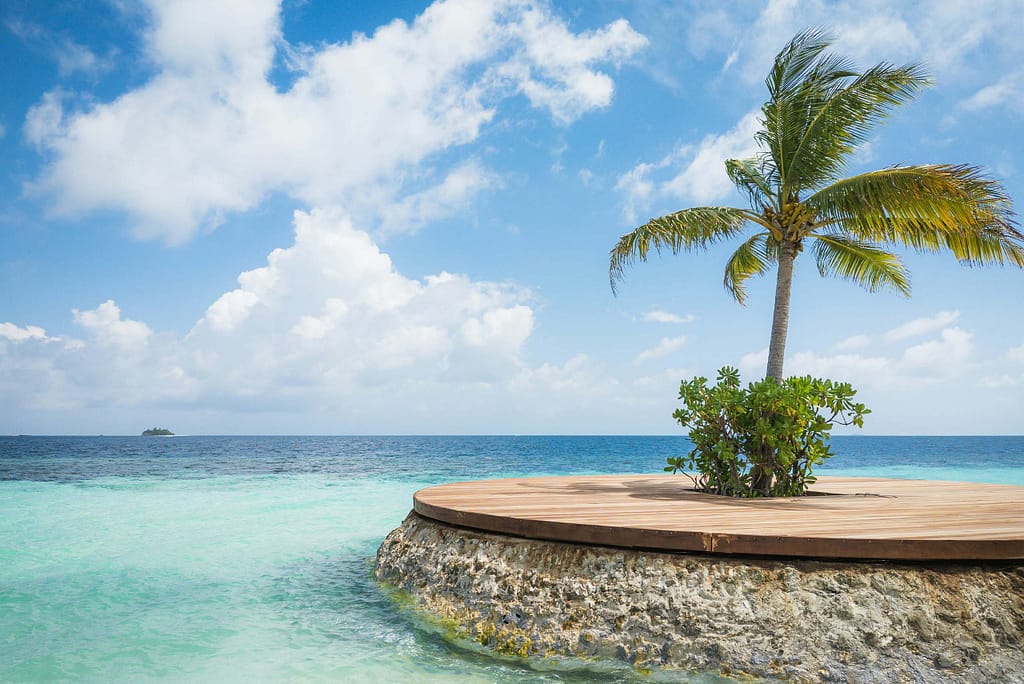
However, if you have 10 days to two weeks or more, consider venturing farther afield. Some of the outer atolls though a bit more remote are home to vibrant marine life and quieter, less touristy islands. Two standout options include:
- Baa Atoll, known for its UNESCO Biosphere Reserve and seasonal manta ray gatherings
- Alif Alif (North Ari) Atoll, famous for whale shark sightings and incredible diving spots
Both of these atolls are roughly two hours by speedboat or a short domestic flight away and offer unforgettable natural experiences at more accessible price points than private resorts.
In short, with a bit of planning, it’s entirely possible to see the Maldives on a budget without sacrificing the natural beauty and unique island charm that make this destination so special.
Discover Cheap and Comfortable Accommodation Options
A great starting point for planning your Maldives trip on a budget is to choose a specific atoll to explore, then dive into research on the local islands within that region. One of the most effective methods is to use Google Maps zoom in on each island to spot guesthouses, assess the island’s layout, and get a feel for its size and surroundings.
In our experience, this approach offered a clearer picture of what to expect, not just in terms of accommodations but also in understanding the logistics of getting around the Maldives. It’s a hands-on way to visualize distances, plan your transfers, and select islands that align with your travel style, time frame, and budget.
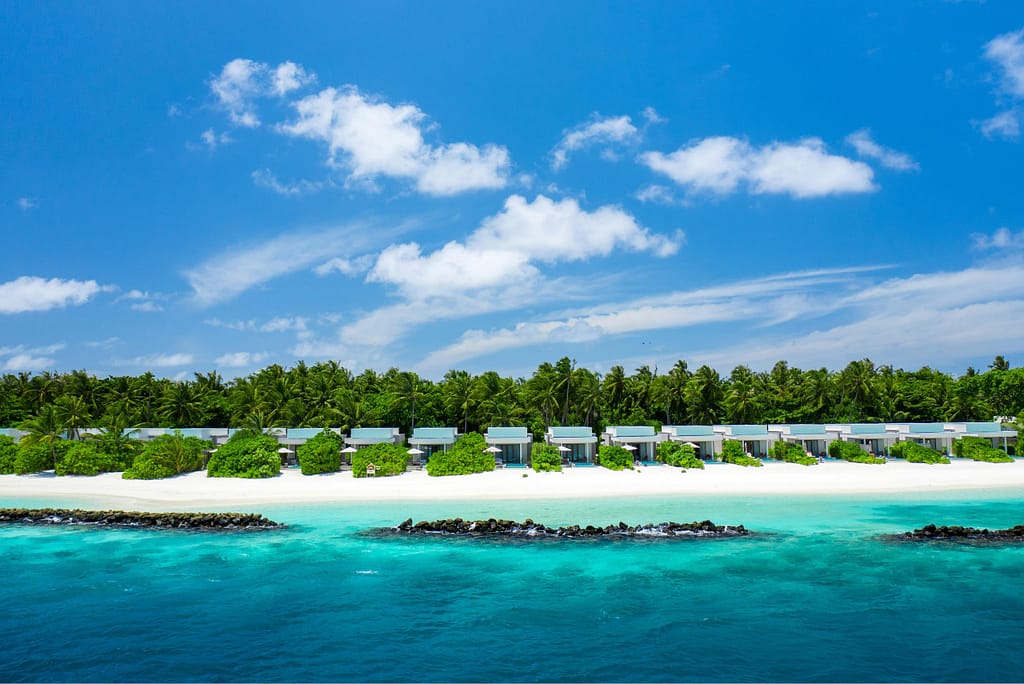
In addition to using maps and travel forums, we found Instagram to be an incredibly useful tool for researching guesthouses and local islands. By checking geotags and browsing through photos and stories, we were able to get a real sense of what each property offered, how the rooms looked, and what the surrounding island environment was like. It added a visual layer of insight that helped us make more informed choices especially when it came to atmosphere and aesthetics.
During our budget-friendly journey through the Maldives, we discovered some absolute gems. One of our favorite stays was at Dhoani Maldives Guesthouse on Kendhoo in Baa Atoll a peaceful island with a warm local charm. We also had an unforgettable experience at Biosphere Inn on Dharavandhoo, which impressed us with its hospitality and proximity to some of the best marine life in the region.
Explore Maldives Without Spending Too Much
One of the best perks of traveling the Maldives on a budget? By saving on accommodations—thanks to affordable guesthouses on local islands you’ll have more freedom to enjoy the very experiences that make the Maldives so unforgettable.
The most rewarding excursions will vary depending on your location and personal travel budget. For example, in Baa Atoll, big game fishing is a top activity, but it tends to be on the pricier side. Fortunately, most guesthouses and small hotels offer a variety of excursion options upon arrival, often at better rates than resorts.
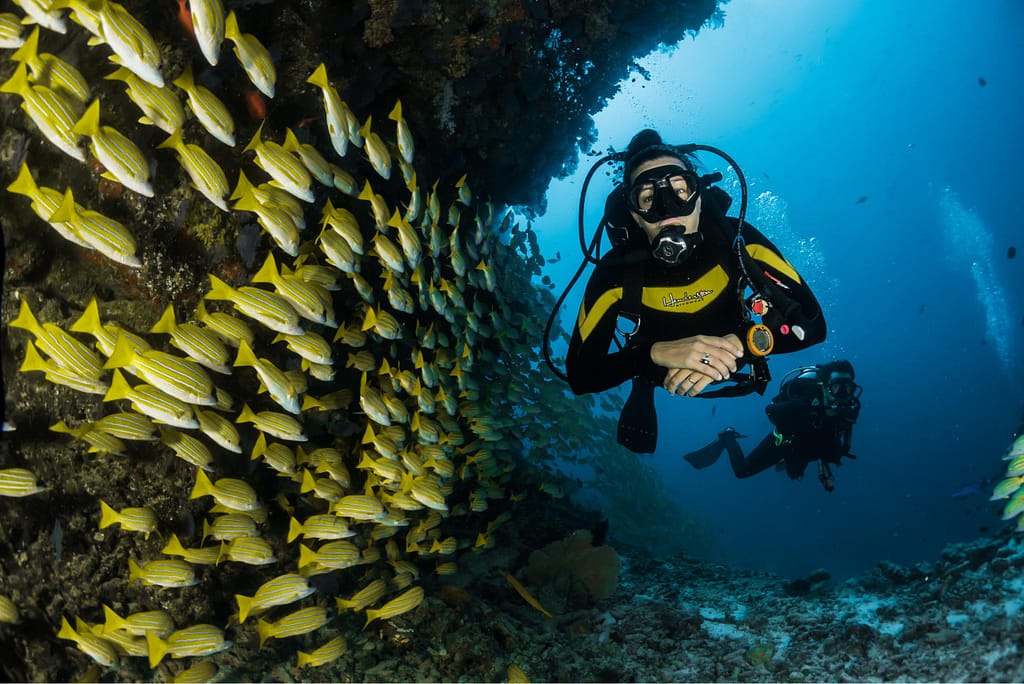
In general, here are some must try budget friendly activities in the Maldives:
Visit a remote sandbank for a peaceful beach picnic or a photo worthy moment
Snorkel vibrant local reefs, often teeming with colorful marine life
Join a manta ray or whale shark tour during the right season an unforgettable experience
Set sail on a dolphin cruise the Maldives is home to large pods of playful dolphins
Try your hand at fishing, a favorite pastime among locals and visitors alike
We recommend checking with your guesthouse or hotel to see what excursions are offered. Many experiences are customizable and can be shared with other travelers to keep costs low. Pick the ones that excite you most you’re in for an incredible adventure either way!
Maldives Travel Taxes Explained Clearly
If you’re planning a trip to the Maldives, it’s important to be aware of the additional taxes and fees that can quickly add up sometimes catching travelers off guard. Whether you’re staying at a high-end resort or a locally owned guesthouse, these charges are applied across the board.
Here’s a breakdown of the key Maldivian taxes to keep in mind for 2025:
Green Tax: A daily environmental fee applied per guest. As of 2025, it’s USD $12 per night at most resorts, and USD $6 per night at smaller properties (with fewer than 50 rooms).
Tourism Goods and Services Tax (T-GST): Set to increase to 17% in 2025, this tax is added to nearly all goods and services related to tourism, including accommodations, food, and excursions.
Departure Tax: Starting in 2024, departure taxes have increased, but the good news is they are typically included in your airline ticket price, so you won’t need to pay this separately at the airport.
In total, these taxes can add 20% or more to your overall trip costs, so it’s wise to factor them into your travel budget from the start. Most hotels and booking platforms will show these fees either included or as a separate line item always double check before confirming your reservation.
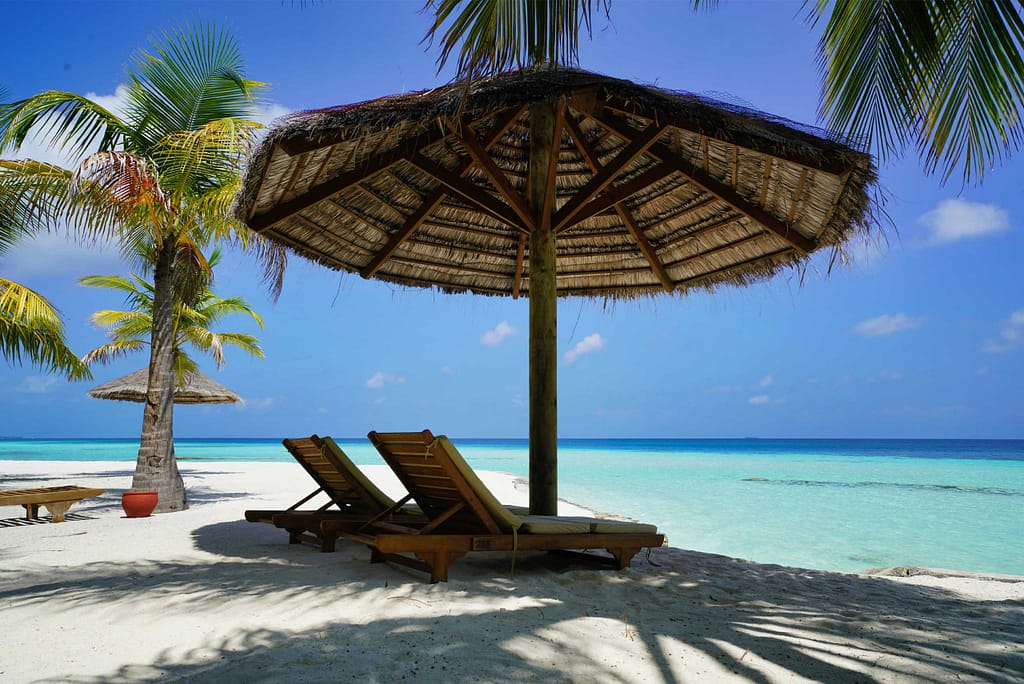
The good news is that many guesthouses now include taxes in their listed prices, helping travelers avoid any last-minute surprises. In many cases, excursion costs at guesthouses are also tax-inclusive, making it easier to plan your budget in advance.
That said, it’s still wise to bring a bit of extra cash, just in case—both USD and Maldivian Rufiyaa (MVR) are widely accepted. Having some local currency on hand can also come in handy for small purchases, tips, or any incidental expenses not covered by your accommodation.
What to Pack for Maldives on Budget
With year-round tropical temperatures, clear turquoise waters, and some of the world’s best snorkeling, the Maldives offers an unforgettable island experience but it also requires thoughtful packing, especially if you’re traveling on a budget.
Because many local islands are remote and minimally developed, it’s essential to bring everything you might need, as finding specific items once you arrive can be difficult and expensive. While resorts and some larger islands may have small shops, the selection is often limited and priced at a premium.
For example, sunscreen, reef-safe sunblock, and basic toiletries like conditioner or shaving cream can be hard to find or sold in small quantities at high markups. Similarly, clothing essentials such as swimsuits, rash guards, or modest attire for visiting local islands are rarely available for purchase locally.
To avoid unnecessary stress or extra costs, pack smart by preparing in advance. Bringing your own supplies ensures comfort, saves money, and helps you make the most of your Maldivian adventure without having to rely on what’s (not) available in local shops.
Maldives Travel Seasons and Best Time to Go
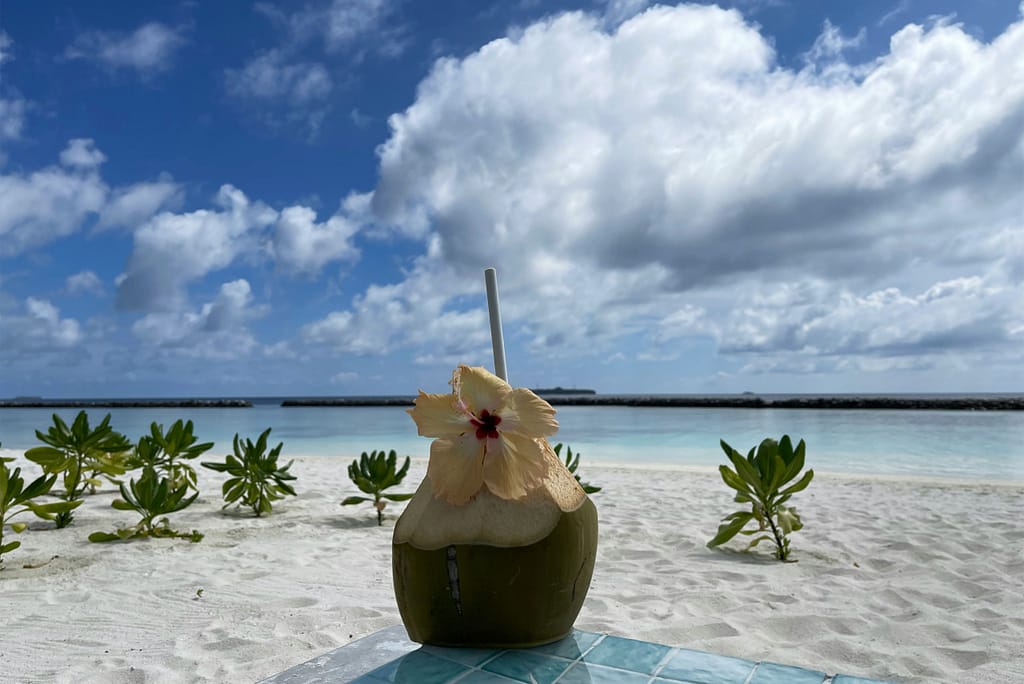
Many travelers arrive in the Maldives with a misunderstood expectation of perfect weather but the reality, especially in recent years, is a bit more nuanced.
Traditionally, the dry season runs from December to April, often referred to as the Maldivian “summer.” These months are considered the peak travel season, thanks to long, sun-drenched days, average temperatures above 30°C (86°F), and calm, crystal-clear waters ideal for diving, snorkeling, and beach relaxation. Naturally, this high demand drives prices up, and guesthouses and excursions can be 20% more expensive compared to the off-season.
However, during our recent trip in December, we experienced three full days of rain out of an eight-day stay. Curious, we spoke with Maldivian locals who confirmed that climate change has noticeably altered weather patterns in the region. What used to be a reliably dry period now brings more frequent and unpredictable rain, even during what was once considered the most dependable time to visit.
While you can still enjoy mostly sunny days between December and April, it’s wise to plan with realistic expectations. A few showers even during peak season—are now common. Flexibility and a good attitude go a long way when exploring tropical destinations like the Maldives.
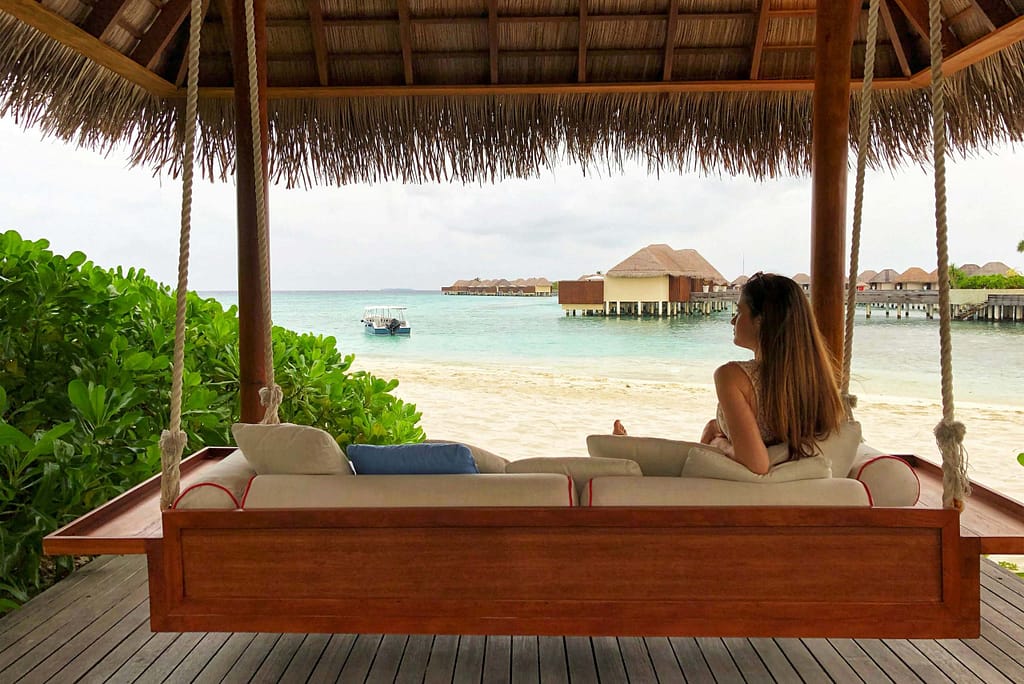
If you’re planning a budget-friendly trip to the Maldives, timing can make a big difference. For the best value, consider traveling during the shoulder seasons November or April when the weather is still pleasant, but airfare and accommodation prices are noticeably lower than during peak months. For even greater savings, look to the off-season (May through July), when you’ll often find the lowest rates on guesthouses and domestic flights, despite a higher chance of occasional rain.
That said, one thing remains consistent throughout the year: the heat. The Maldives enjoys a hot, tropical climate year-round, with average daily temperatures hovering around 28–32°C (82–90°F). No matter when you visit, pack light, breathable clothing, and be prepared to soak up plenty of sunshine rain or shine.
- How to Enjoy a Week in the Maldives Without Overspending.
- How to Plan an Affordable Trip to the Maldives
- How to Travel Between Islands in the Maldives
- Best Budget Accommodations in the Maldives
- Discover Cheap and Comfortable Accommodation Options
- Explore Maldives Without Spending Too Much
- Maldives Travel Taxes Explained Clearly
- What to Pack for Maldives on Budget
- Maldives Travel Seasons and Best Time to Go







